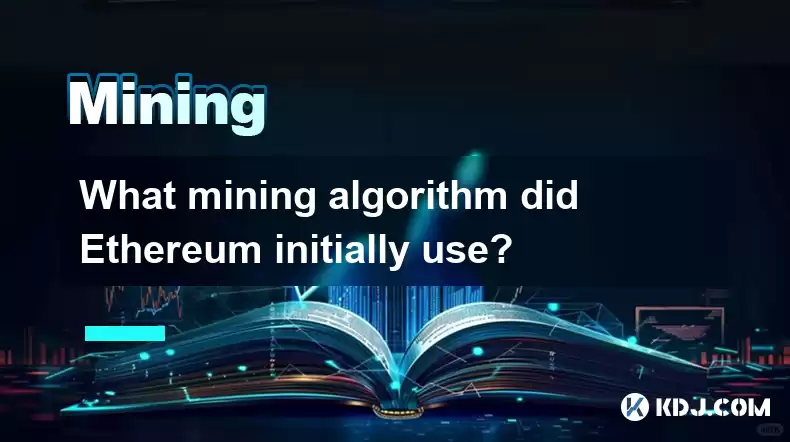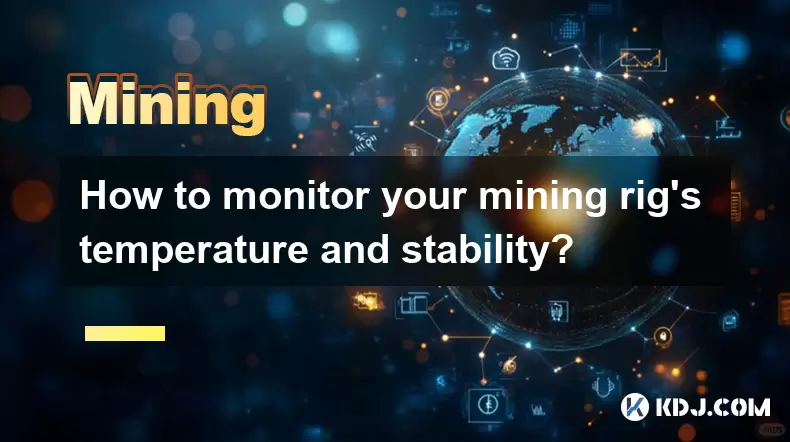-
 Bitcoin
Bitcoin $116400
-0.36% -
 Ethereum
Ethereum $4033
3.40% -
 XRP
XRP $3.302
-1.26% -
 Tether USDt
Tether USDt $1.000
-0.02% -
 BNB
BNB $796.1
1.67% -
 Solana
Solana $177.8
1.89% -
 USDC
USDC $0.9999
0.00% -
 Dogecoin
Dogecoin $0.2314
4.09% -
 TRON
TRON $0.3381
0.14% -
 Cardano
Cardano $0.7989
1.22% -
 Stellar
Stellar $0.4496
-1.84% -
 Chainlink
Chainlink $20.42
9.42% -
 Hyperliquid
Hyperliquid $41.17
0.88% -
 Sui
Sui $3.914
3.77% -
 Bitcoin Cash
Bitcoin Cash $584.7
1.52% -
 Hedera
Hedera $0.2632
-0.54% -
 Avalanche
Avalanche $24.09
3.40% -
 Ethena USDe
Ethena USDe $1.001
-0.02% -
 Litecoin
Litecoin $123.2
1.33% -
 Toncoin
Toncoin $3.318
-0.04% -
 UNUS SED LEO
UNUS SED LEO $8.984
-0.05% -
 Shiba Inu
Shiba Inu $0.00001323
2.85% -
 Uniswap
Uniswap $10.90
4.41% -
 Polkadot
Polkadot $3.999
3.34% -
 Dai
Dai $1.000
0.01% -
 Cronos
Cronos $0.1630
9.64% -
 Bitget Token
Bitget Token $4.484
0.82% -
 Monero
Monero $272.4
2.44% -
 Pepe
Pepe $0.00001173
6.03% -
 Aave
Aave $290.8
2.88%
What mining algorithm did Ethereum initially use?
Ethereum's initial Ethash mining algorithm, a memory-hard mechanism designed to prevent ASIC dominance and promote network decentralization, will soon be replaced by the more energy-efficient Proof-of-Stake consensus in the Ethereum 2.0 upgrade.
Feb 20, 2025 at 04:12 am

Key Points:
- Ethereum's Initial Mining Algorithm: Ethash
- The Need for a Memory-Hard Algorithm
- Ethash: A Proof-of-Work Consensus Mechanism
- Limitations of Ethash
- Transition to Proof-of-Stake: The Ethereum 2.0 Upgrade
Ethereum's Initial Mining Algorithm: Ethash
- Purpose: Ethereum initially used the Ethash mining algorithm to achieve decentralization and secure its network.
- Memory-Hard Algorithm: Ethash was designed as a memory-hard algorithm, requiring high-memory graphics cards (GPUs) for efficient mining.
- Resistance to ASICs: This memory-intensive design aimed to prevent the dominance of specialized mining hardware (ASICs) and promote a decentralized network of miners.
The Need for a Memory-Hard Algorithm
- Preventing Centralization: ASICs are specialized mining devices that offer significant efficiency advantages over traditional CPUs.
- Fair Distribution of Mining Rewards: Memory-hard algorithms level the playing field for miners, ensuring that they are not outcompeted by ASIC manufacturers.
- Decentralized Network: Ethash's memory-intensive nature helped maintain a decentralized network where no single entity could control a majority of the mining power.
Ethash: A Proof-of-Work Consensus Mechanism
- Proof-of-Work (PoW): Ethash is a Proof-of-Work algorithm, where miners compete to solve complex mathematical puzzles.
- Block Production: The miner who successfully solves the puzzle first gets the right to add a block to the blockchain and receive the associated block reward.
- Consensus: The PoW mechanism ensures consensus on the state of the blockchain, as miners verify each other's work before adding blocks.
Limitations of Ethash
- High Energy Consumption: The energy-intensive nature of the PoW consensus algorithm can lead to environmental concerns.
- High Transaction Fees: Netzwerk congestion due to competing miners can result in increased transaction fees.
- Slow Transaction Speeds: The PoW mechanism limits the number of transactions that can be processed per block, leading to slower transaction times.
Transition to Proof-of-Stake: The Ethereum 2.0 Upgrade
- Proof-of-Stake (PoS): Ethereum is transitioning to a new consensus mechanism called Proof-of-Stake, where validators stake their ETH holdings to earn rewards.
- Reduced Energy Consumption: PoS eliminates the need for energy-intensive mining, significantly reducing the ecological impact.
- Lower Transaction Fees: The reduced workload of validating blocks lowers the barrier of entry for validators, leading to greater competition and potentially lower fees.
- Increased Scalability: PoS has the potential to increase the throughput and transaction speeds of the Ethereum network.
FAQs
Q: Why did Ethereum choose Ethash as its initial mining algorithm?
A: To prevent ASIC dominance and promote a decentralized network of miners.
Q: How does the Ethash algorithm work?
A: Miners solve memory-intensive puzzles to produce a valid block, based on a random number known as a "DAG."
Q: What are the limitations of the Ethash algorithm?
A: High energy consumption, resulting in environmental concerns, network congestion, and slow transaction speeds.
Q: What is the Ethereum 2.0 upgrade?
A: A transition from Proof-of-Work to Proof-of-Stake, aimed at reducing energy consumption, increasing scalability, and lowering transaction fees.
Q: What is the purpose of Proof-of-Stake?
A: To replace energy-intensive mining with a system where validators stake their ETH holdings to validate blocks and earn rewards.
Disclaimer:info@kdj.com
The information provided is not trading advice. kdj.com does not assume any responsibility for any investments made based on the information provided in this article. Cryptocurrencies are highly volatile and it is highly recommended that you invest with caution after thorough research!
If you believe that the content used on this website infringes your copyright, please contact us immediately (info@kdj.com) and we will delete it promptly.
- Shiba Inu (SHIB) in the Crypto Landscape: Community, Trends, and Future Outlook
- 2025-08-09 20:30:12
- Lasers in Modern Warfare: Iron Beam and the Future of Defense
- 2025-08-09 20:30:12
- Maxi Doge Presale: The Meme Coin That's Pumping Iron and Prices!
- 2025-08-09 19:10:11
- Rare Coin Warning: Don't Get Fooled by That 1p Coin!
- 2025-08-09 18:50:12
- Cardano, Unilabs, and Tron Price: Decoding the Latest Crypto Buzz
- 2025-08-09 18:30:12
- Aerodrome Finance: Price Targets and the Bullish Channel - What's Next?
- 2025-08-09 18:50:12
Related knowledge

What is "proof-of-work" and how does it relate to mining?
Aug 07,2025 at 02:03pm
Understanding the Concept of Proof-of-WorkProof-of-work (PoW) is a consensus mechanism used in blockchain networks to validate transactions and secure...

What are the differences between mining on Windows vs. Linux?
Aug 06,2025 at 11:29pm
Overview of Cryptocurrency Mining PlatformsCryptocurrency mining involves using computational power to solve complex cryptographic puzzles and validat...

How to use an old computer for cryptocurrency mining?
Aug 07,2025 at 12:42pm
Understanding the Feasibility of Using an Old Computer for MiningUsing an old computer for cryptocurrency mining may seem outdated, but it is still te...

Can you mine cryptocurrency using solar power?
Aug 07,2025 at 12:00am
Understanding the Basics of Cryptocurrency MiningCryptocurrency mining involves validating transactions on a blockchain network by solving complex cry...

How to monitor your mining rig's temperature and stability?
Aug 09,2025 at 09:43am
Understanding the Importance of Temperature Monitoring in Mining RigsMaintaining optimal temperature levels in a mining rig is essential for long-term...

How to build a mining rig inside a PC case?
Aug 06,2025 at 11:01pm
Understanding the Basics of a Mining Rig in a PC CaseBuilding a mining rig inside a PC case involves transforming a standard computer chassis into a d...

What is "proof-of-work" and how does it relate to mining?
Aug 07,2025 at 02:03pm
Understanding the Concept of Proof-of-WorkProof-of-work (PoW) is a consensus mechanism used in blockchain networks to validate transactions and secure...

What are the differences between mining on Windows vs. Linux?
Aug 06,2025 at 11:29pm
Overview of Cryptocurrency Mining PlatformsCryptocurrency mining involves using computational power to solve complex cryptographic puzzles and validat...

How to use an old computer for cryptocurrency mining?
Aug 07,2025 at 12:42pm
Understanding the Feasibility of Using an Old Computer for MiningUsing an old computer for cryptocurrency mining may seem outdated, but it is still te...

Can you mine cryptocurrency using solar power?
Aug 07,2025 at 12:00am
Understanding the Basics of Cryptocurrency MiningCryptocurrency mining involves validating transactions on a blockchain network by solving complex cry...

How to monitor your mining rig's temperature and stability?
Aug 09,2025 at 09:43am
Understanding the Importance of Temperature Monitoring in Mining RigsMaintaining optimal temperature levels in a mining rig is essential for long-term...

How to build a mining rig inside a PC case?
Aug 06,2025 at 11:01pm
Understanding the Basics of a Mining Rig in a PC CaseBuilding a mining rig inside a PC case involves transforming a standard computer chassis into a d...
See all articles

























































































